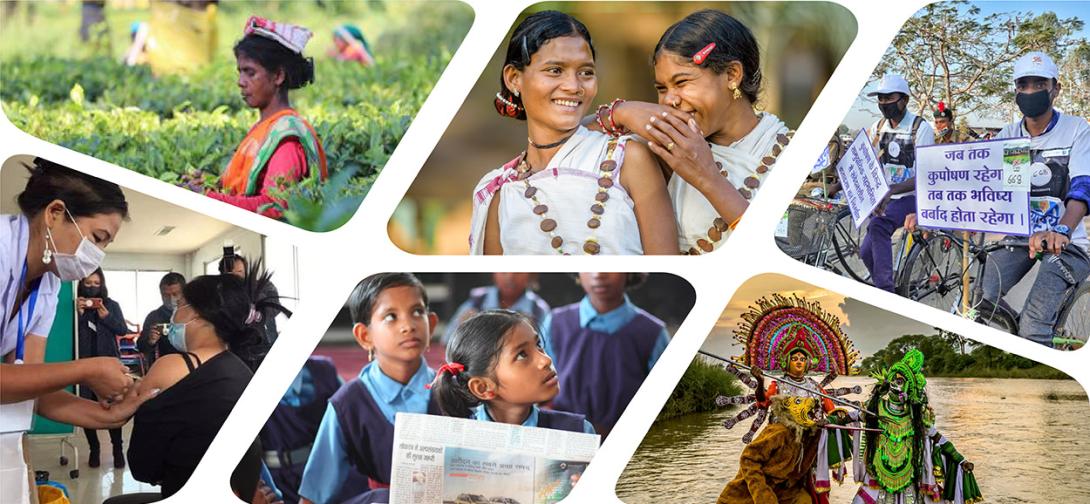Sustainable Urban Transport Is the Way Forward
City and state governments to embark on a sustainable and equitable urban mobility pathway for sustainable and equitable growth.
The National Urban Transportation Policy (NUTP), launched in 2006, aims at providing better mobility and sustainability by focussing on people mobility and not vehicle mobility. The policy envisages an urban mobility framework that is contextual, and is suited to the geographical, social and economic needs of our cities and citizens.
However, the progress in implementation of the NUTP in our cities is far from satisfactory. Change needs to happen before Indian cities double in population by 2050 (World Economic Forum, 2016). The present focus is on building roads and flyovers to cater to the ever-increasing vehicular traffic of India. What is missing is adequate infrastructure for moving people through means, such as bicycle tracks and dedicated pedestrian pathways. Even where such infrastructure is available, it is not being used to its full extent. For example, pedestrian pathways are being encroached upon for other uses or are not walkable because of being broken or lined with garbage, etc. making it neither obstruction free nor safe. Similar is the case with our cycle tracks. The pattern of urban growth in terms of urban sprawl has resulted in an even higher demand for motorized travel.
The need of the hour is to focus on public transportation (PT) in India, especially, low carbon non-motorised transport (NMT). As income levels increase, people too aspire to shift to private transport, due to infrequency and unreliability of public transport. As a result, the use of such desirable modes of transportation (such as NMT or PT) is declining and the use of undesirable modes (i.e. car and 2-wheelers) is growing. To keep India walking, the government needs to oversee an incremental and mixed mode approach for a transition into a low carbon pathway. Cities and states needs to be pro-active and may consider following interventions for sustainable urban mobility solutions:
A Comprehensive and Integrated Transport Plan for Each City:
City transport is administered by various modal agencies such as the city bus corporation like DTC, the municipality, the rail and metro-rail corporation, the city development authority like DDA, etc. What is really required is an integrated process of transport planning for co-ordinated inter-city and intra-city transport. Sustainable urban transportation system, however requires, integration of Land Use and Transport Planning. The Transit Oriented Development (TOD) policy will build a roadmap in integrating public transport systems with the built environment.
Doing Away with ‘One Size Fits All’ Approach:
More cities are going for MRT, LRT and monorail, despite the fact that these are capital intensive and require massive capital and operating subsidies. Tier-II and Tier-II cities require a different approach, given their population densities, urban form and socio-economic conditions of the city. Intermediate public transport (IPT) modes like e-rickshaws, shared autos and cycle rickshaws and NMT assume importance as they can meet the travel demands in small and medium size cities. Even within large cities, 20 to 30 per cent of the family income of nearly 50 percent those living in unauthorized settlements is spent on public transport (Tiwari 2007). Therefore, a mixed modal strategy is best pursued in different cities, to cater to different segments of the population.
System-based Approach is Critical:
Transport networks cannot exist in silos. Sustainable urban mobility calls for Intermodal Integration, i.e., integration of various modes of transport to provide seamless connectivity for the commuters. Last mile connectivity is an important factor for determining the success of public transport system in a city.
Empowering Municipal Governments and Citizens:
Municipalities needs to be empowered by providing autonomy in functions, finances and functionaries for better citizen engagement in city planning. The Smart Cities Mission focuses on developing sustainable and shared mobility systems, in addition to laying smart roads, street redesign and smart parking systems. Huge resources are being spent on improving urban transport projects such as real time bus tracking system, smart bus shelters and junction improvements (MoHUA 2018). There is need to create demand from the bottom-up level to increasing citizen participation and urban practitioners’ awareness.
Making Public Transportation Accountable:
For Indian cities to be livable, urban mobility, especially, public transport such as bus and bus rapid transit (BRT) systems must become a vital part of urban growth. We need to think of innovative ways of financing our PT ventures and operate to dis-incentivize private vehicles. There is need to improve operations of PT by adopting Intelligent Transport System (ITS) and GPS tracking of buses for better route planning. This would induce a long term behavioral change where people are encouraged to go for public transport.
Providing Barrier-free Integrated Transport Solutions For Vulnerable Groups:
To make cities more inclusive and to address the requirements of the vulnerable sections of the population, planners need to take into account the concerns of different segments of the population during transport planning. Women represent the largest share of public transport users around the world, yet they face many barriers that limit their mobility and entry into the formal work-force. Therefore, all experiences of public transport, such as those of women, children, the poor and the disabled needs to be taken into consideration, budgeted and planned for. The buses and train corridors, stops and junctions need to be well lit, easily accessible and located in crime-free areas.
Way Forward
For India to achieve resilient and inclusive cities, it is necessary to continuously plan for a low carbon model of growth in our cities, rather than focussing on physical infrastructure for vehicle mobility alone. The need is to build compact cities with a mixed land use and integrating transport planning with land use planning which emphasizes, on one hand, women participation and lead to inclusive sustainable urban growth, on the other. The planners, city authorities and civil society all have to join the mission to make our cities a better place to live in. The need is to implement NUTP for more mobile cities.
*Sunita Sanghi is Senior Adviser, and Manshi Singh and Charlotte Adelina are Young Professionals, NITI Aayog. Views expressed are personal.
 National Portal Of India
National Portal Of India 







